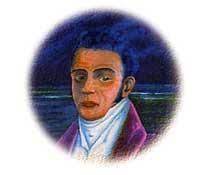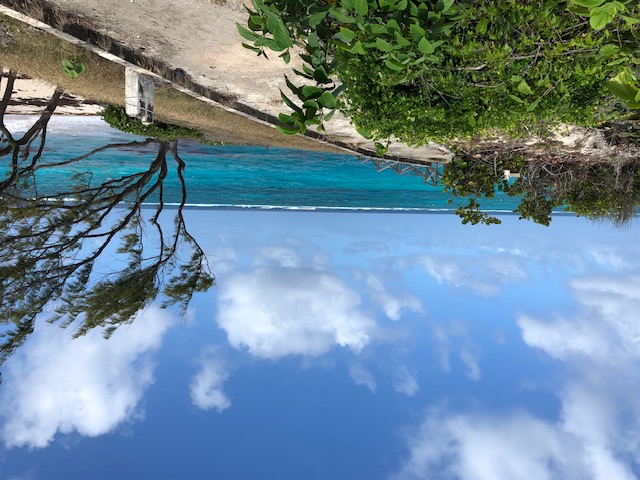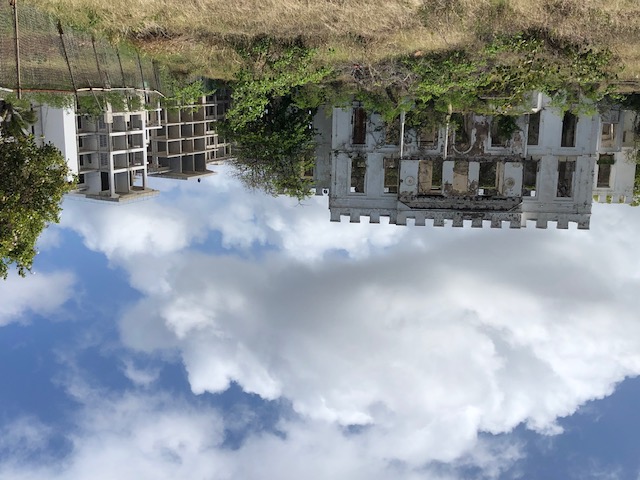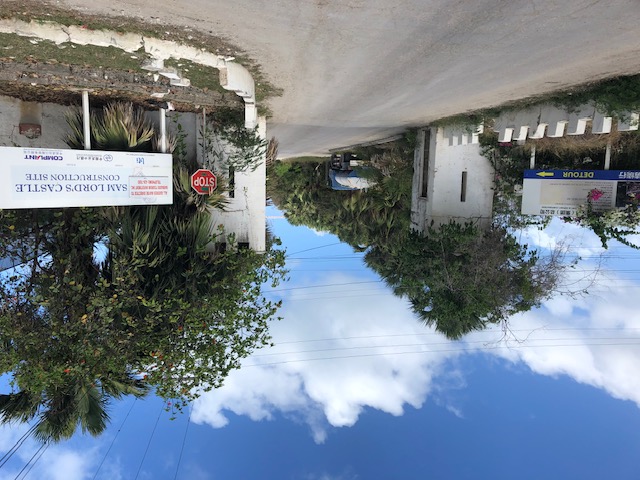Barbados: A Walk through History (Part 6)
Section 4 The Genealogy of Pirates (Cont’d)

(Henry Morgan)
The Glory and Downfall of Pirates
The word “pirate” conjures up images of ruffians and criminal gangs; however, many of these pirates in the 16th century, such as John Hawkins and Francis Drake, were privateers who received the backing of the English Royal crest to attack and loot enemy countries’ (mainly Spanish) ships, making it difficult to distinguish whether they were a national fleet or a private gang of vessels roaming the Caribbean Sea.
This tendency continued into the 17th century. A pirate named Henry Morgan (1635-1688) was part of this group. In 1650 at the age of 15, he made his way from Wales to Barbados as an indentured servant. Five years later when his contract ended he found himself in Jamaica and took on a new job in piracy. Morgan, who was quite a conspicuous figure, made Jamaica his base and raked in large profits as the captain of a pirate ship attacking the Spanish colonies, such as Cuba and Panama. He paid the English government part of his profits robbed from England’s rival, Spain and became a well-known “El Pirata.” Morgan was granted knighthood by Charles II due to his “achievements” at sea, even earning the position of Lieutenant Governor of Jamaica where he was in the position of catching pirates (although it is said that behind closed doors he gave permission to privateers who paid him large bribes to continue attacking Spanish vessels).
As one can see with the likes of Morgan, who, once a pirate, somehow climbed up to a position to clamp down on pirating, piracy was starting to shed its cover as a government project and revealing itself as almost a completely illegal act of plundering. Bartholomew Roberts, Blackbeard, our dear Gentlemen Pirate Stede Bonnet and others who were ramping in the Caribbean seas at this time were known as “Outlaws of the Seas”, living in the golden age of piracy.
However, following this “golden age” came the gradual modernization of the European “Great Powers’” governments, with better-maintained regular standing navies in the ports of their colonies to protect their merchant fleets through an organized chain of command. Especially “the United Kingdom of Great Britain”, created by the Union of England and Scotland in 1707, placed a robust fleet in Port Royal (the center of Jamaica at the time) in order to crack down on pirates roaming the seas. Also, Great Britain’s colonies in North America, where momentum for independence were being gathered with gaining economic power by exporting raw cotton, began to build up naval powers strong enough to repel any pirates.
This is how the pirating world gradually became a declining industry. In the beginning of the 19th century pirates were left with the choice of either getting caught by the authorities or retiring from their profession. In the 1830’s steam ships took the place of sailing ships, giving a fatal blow to pirates and their vessels. Pirates who once flew their menacing “skull and crossbones” flags on their sailing vessels, repeatedly ravaging the Caribbean would eventually disappear into the fog.
However, for some time in the first half of the 19th century when the pirating industry was declining, a bizarre pirate came onto the scene in Barbados.
Sam Lord-Pirate who Lived in a “Castle"
For a period of 20 years starting from 1820 merchant ships frequently ran aground in a bay of south eastern Barbados. There are records reporting over 20 vessels became stranded on the reefs not too far out from shore. Most of these stranded ships were looted by pirate ships, who stole cargo, money, and other valuable items.
Eventually rumors that could not be ignored made their way around town. They went something like “a ship navigating the seas at night saw many lights alit on shore, and thinking that this spot of brightness was the port of Bridgetown, started to approach it only to wreck their ship on reefs below the surface. What they thought were the lights of Bridgetown were actually lanterns hanging from coconut trees surrounding a mansion facing the beachfront.”. The malicious rumor further continued, saying that the man living in this mansion, called “Sam Lord’ Castle”, was a pirate ring leader and would plunder the stranded vessel. The man living in this mansion overlooking the beautiful Long Bay was Samuel Hall Lord, nicknamed Sam Lord (1778-1844), born in the parish of St. Philip, Barbados. His father was a sugar cane plantation owner, allowing his son to grow up in a comfortable, affluent environment. However, Samuel’s bad behavior was well-known throughout the island starting from his youth. He loved showing off, and on top of not thinking twice before deceiving someone, he had a violent streak to his nature.
The wealthy Lord from time to time made trips back to the mother country of England, where he met the beautiful Lucy Wightwick in his late 20s. She also came from a wealthy family, and fell in love with the carefree, Caribbean playboy Lord, who was the opposite of the uptight British men she was used to seeing. She accepted his offer of marriage, but according to legend it is said that Lord, who made his way around British social circles, was searching for a lady with money and a good reputation to play the part of his wife. Lucy’s father seemed to have sensed Lord’s true nature and strongly opposed their marriage, but Lucy, who was head-over-heels in love with Lord ignored her father’s protests and left with Lord for Barbados in 1808.
However, marriage life was not as how Lucy had expected it to be. Lord turned out to be a horribly abusive husband, and as the years passed he started to show his true nature, treating his wife deplorably to the point where she was locked up in the cellar of their mansion, forced to become a prisoner in her own home. Outside, Lord lived a life of luxury, spending all his time in pursuit of debauchery, making one of his slaves his mistress, producing two sons (note 1). In the seventh year of their marriage, Lucy traded her jewelry to the man who was in charge of keeping watch over her in the cellar in return for her freedom, and she escaped back to England.

(Sam Lord)
Around this time, Lord started to show obsessiveness to build a stately mansion on the land he inherited from his father on Long Bay.
The construction of the mansion, self-named “Sam Lord’s Castle” would become his life work, undeniably requiring a massive amount of funds to complete. Even pouring all the money he inherited from his father was not enough to complete the construction, and so he drove himself into debt. He was soon accused of fraud during the construction of his “castle” as early as in 1817, but this time he was not charged due to lack of sufficient evidence.
Sam Lord’s Castle was completed in 1820, designed in the Georgian Style which was popular back in England at the time. This residence with its liberal use of coral-based limestone buildings surrounded by expansive gardens was one of the best and luxurious private residences on Barbados at the time where there were many rich plantation owners.
This is where Lord started his lifestyle in the manner of a royal. However, backstage he was up over his head in debt which there was no foreseeable way to pay back. He often got into trouble with his creditors, even going to trial. But, the crafty Lord devised a plan. Looking out from his beachfront castle, there were those ships foolish enough to run aground on reefy shallows at this sea area. This was too good of an opportunity to ignore.
Lord used the previously described method-hanging lanterns and planting torches around the coconut trees to mislead ships into the reef-to prey on the grounded vessels and stealing its valuable cargo. Lord’s unconventional acts of piracy were the beginning of his way to cover his debts while still living a life of decadence. It is thought that a part of the valuable European paintings and furnishings in Sam Lord’s Castle were stolen from vessels that were unfortunate enough to be lured towards the shallows of Long Bay.
However, in order to perform acts of piracy henchmen are a must. And information inevitably starts to leak. Rumors started to spread around the island that the already ill-reputed Lord had started to meddle in the cowardly act of piracy. Bold as he was, Lord realized that he could no longer remain in Barbados, and leaving behind the castle which he put his soul into, furtively left for England. Henceforth, the penniless Lord never made his way back to the island, and, allegedly, in 1844 he died a lonely and impoverished death (note 2).
*********************************************
There is a sequel to the story of Lord’s grand estate where he lived a life of ostentation.
Following his death, Sam Lord’s Castle was passed down to and owned by his relatives and their descendants for about 100 years. However, in 1942 it changed hands and was renovated into a hotel. The hotel, named “Sam Lord’s Castle Hotel” changed ownership several times, was once known as one of the most luxury hotels on the island. But in the 2000’s it suffered from bad management and went bankrupt.
In 2010, Sam Lord’s Castle which had been left to ruins, was consumed by fire of unknown cause. Only the outside of the thick limestone walls survived. Management of the property was subsequently turned over to the Barbados government.
In the meantime, the following article appeared in the local newspaper "Saturday Sun" on February 20th, 2021, during the height of the COVID-19 pandemic:
“Concerns are being raised over activity going on at the Sam Lord's Castle Project in St. Philip. Residents in the area are reporting movement and work at the construction site despite the government's strict COVID-19 protocol.
When a Saturday Sun team visited the area yesterday and entered the property, about 30 Chinese workers were carrying out activities using heavy-duty equipment. When the workers realised they were being photographed, they stopped what they were doing and walked away. Only some of them were wearing masks.
When contacted, interpreter and translator for the Chinese contractor at the site said that no construction work was being undertaken but what was done involved protective work for the steel structures to avoid corrosion, which will occur if the steel is left exposed to the salt-laden air. The translator added: "The persons involved in this exercise were Chinese who all live on the site. No external parties have been allowed on the site."
The old Sam Lord's Castle property was bought in 2015 by the American hospitality company Wyndham Grand Resort and the project is being funded by a US$240 million loan extended by the Export-Import Bank of China to construct the 450-room 5-star hotel. The construction started in 2017 and it was supposed to be completed in 2020, but was stalled due to disputes about differences in building techniques, culture, ethics, and payment.”
It seems that the odd fate of the mansion that the debaucherous Sam Lord, who engaged in bizarre acts of piracy, built in the 19th century is continuing through to this day. It is sure to be a splendid hotel when completed, no doubt; however, is it only me who is reluctant to spend a night on the premises? (Note 3)
(To be continued in Part 5: “Sugar, Rum, and Slaves”)

(The view from the property of Sam Lord’s Castle on Long Bay. Numerous shipwrecks occurred offshore the bay.)

(The deserted Sam Lord’s Castle. The new hotel under construction is seen on the right (photographed April, 2022).)

(Signs in English and Chinese at the entrance to the construction site of the new Sam Lord Castle Hotel (photographed April 2022).)
(Note 2) According to survey of later years, not all shipwrecks that occurred offshore Long Bay were Lord’s doing, as some of the accidents happened while Lord was off merrymaking in England, away from Barbados. However, there is no mistake that most of the looting of stranded vessels was done by Lord and his cronies. After a lighthouse was built on the shore of St. Philip Parish in 1875 where Sam Lord’s Castle stood, grounding accidents eventually came to an end.
(Note 3) According to legend, there was a tunnel that connected the cellar of the mansion where Lord’s wife Lucy was confined to the coast, and somewhere along the tunnel remained treasure that Lord had hidden. When the building became abandoned after the fire, people purportedly came out looking for this treasure, but came up with nothing. There also seems to be some wishful divers who go out into the reefs where the shipwrecks happened in search of treasure, but so far there have not been any stories of anyone finding something of value.
(This column reflects the personal opinions of the author and not the opinions of the Ministry of Foreign Affairs of Japan)
WHAT'S NEW
- 2024.12.4 UPDATE
PROJECTS
"Barbados A Walk Through History Part 14"
- 2024.9.17 UPDATE
PROJECTS
"Barbados A Walk Through History Part 13"
- 2024.7.30 UPDATE
EVENTS
"408th Lecture Meeting Regarding Global Issues"
- 2024.7.23 UPDATE
PROJECTS
"Barbados A Walk Through History Part 12"
- 2024.7.9 UPDATE
ABOUT
"GREETINGS FROM THE PRESIDENT JULY 2024"
- 2024.7.4 UPDATE
EVENTS
"APIC Supports 2024 Japanese Speech Contest in Jamaica"
- 2024.6.27 UPDATE
EVENTS
"407th Lecture Meeting Regarding Global Issues"
- 2024.5.21 UPDATE
EVENTS
"406th Lecture Meeting Regarding Global Issues"
- 2024.5.14 UPDATE
EVENTS
"405th Lecture Meeting Regarding Global Issues"
- 2024.4.2 UPDATE
PROJECTS
"Water Tanks Donated to Island of Wonei, Chuuk, FSM"




